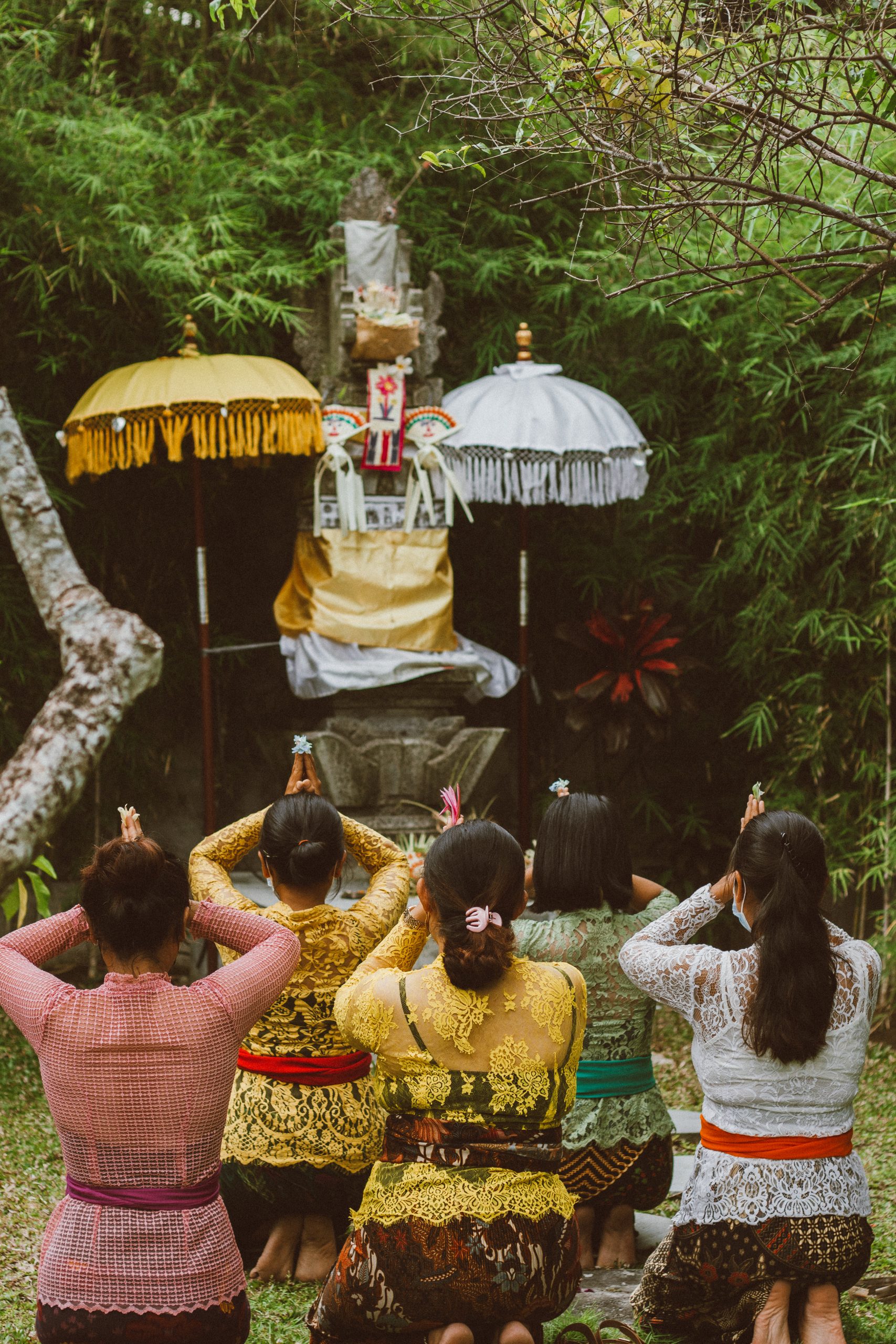Galungan & Kuningan, A Story of Triumph over Adversary
Stories give life to Blood+Bone. We were born out of a story, and we grow with stories about how nature and people live in harmony in Bali. Therefore, we endeavor to tell stories from this side of paradise to the entire world through our Bali-inspired clothing products. One of the most storied elements in Bali is the series of religious ceremonies that are often magical and inspiring — especially the Galungan and Kuningan celebrations.
Galungan & Kuningan
Galungan and Kuningan are the most important religious celebrations in Bali. This ten-day festivity is often considered the paramount feast in the Balinese Pakuwon calendar. The ceremonies begin from Galungan day and continue for ten straight days before ending on Kuningan, in a series of events celebrated every 210 days.
In the days leading up to the Galungan period, Balinese people set up penjor — bamboo poles adorned with coconut leaves, fruitages, and vibrant decorations meant as offerings. Penjor symbolizes Balinese cosmology — the arch represents Mount Agung, the sacred place of gods; the long trunk symbolizes rivers that flow down from the mountain to the sea; meanwhile, the offering holder resembles a temple or shrine.
Several days before Galungan officially begins, families perform a ritual called Penyekeban, in which they cover up fresh fruits to ripen them up before placing them on penjor as offerings. After that, they perform Penyajahan, a ritual of making traditional Balinese tidbits called jaja’.
A day before Galungan, people celebrate Penampahan Galungan, where they prepare offerings and decorate everything before the day of Galungan commences. On Galungan day, Balinese people go on a pilgrimage — usually the local and ancestral temple. A day after that, Manis Galungan is celebrated by visiting families and associates. The celebration goes on for ten days and ends with Kuningan.
A Story of Triumph over Adversary
Balinese people observe Galungan and Kuningan celebrations with much festivity because of the belief that these are the days when dharma prevails against adharma — when virtue comes out victorious against evil. During these sacred ten days, all the gods and ancestral spirits are believed to descend from the heavenly place and join the earthly feast. Therefore, people celebrate these days with entertainment, music and dance performance, prayers, and offerings.
Galungan is a story of triumph over an adversary that roots from the myth of Mayadenawa. The story dates back to the era of the Majapahit kingdom, a Hindu empire that controlled the majority of Java, Bali, and other islands in ancient Indonesia.
It is said that Mayadenawa is the son of a sinister, godless king who possessed immense power. His sinister force ravaged temples and laid waste on the life of Hindu people mercilessly. Even the strongest Majapahit battalions could not defeat the evil prince and his minions.
After a series of futile battles, the Hindu people prayed for the gods’ favor, to which God Indra answered the call and decided to fight with them. Indra descended from the heavenly place with an army of ancestral spirits to wage war against Mayadenawa. They eventually won the war on a day we now celebrate as Galungan. After the victory, Indra and his divine armies waited for ten days on Earth to recuperate and make sure they won once and for all.
Galungan and Kuningan celebrations have inspired many artworks and craftwork in Bali, including sculpture, painting, and many others. The festivity of these days also unravels the true colors of Bali as the island is filled with traditional colors, exotic fragrances, and artistic decorations. Blood+Bone takes inspiration from the story of Galungan and Kuningan and how they unravel the beauty of Bali.












